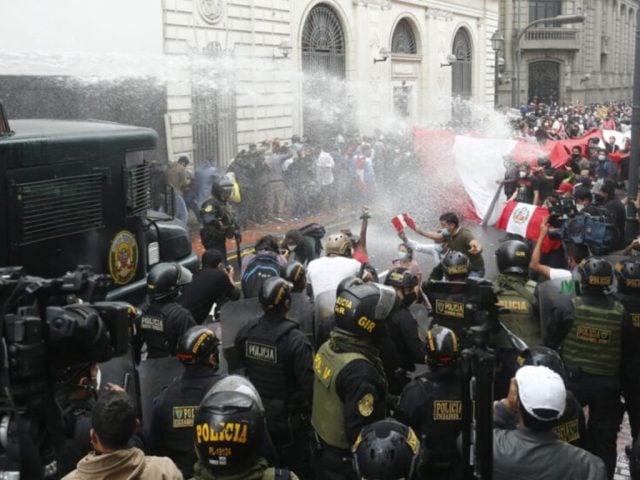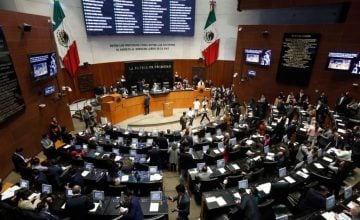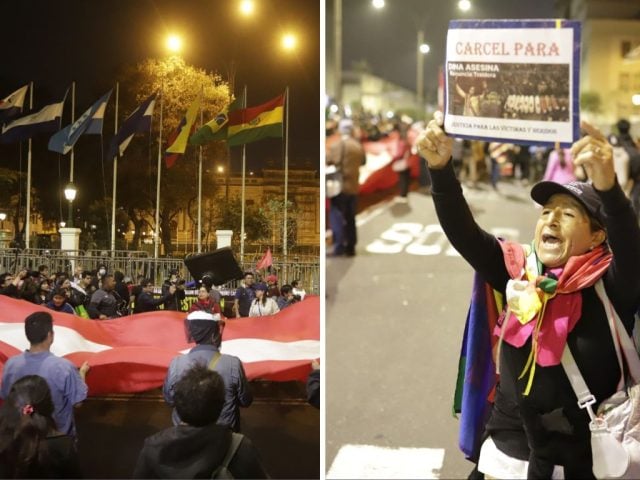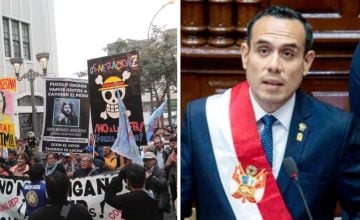Original article: Perú: extorsión crece 570% y el Gobierno prioriza control de protestas por sobre seguridad ciudadana
In a context where reports of extortion have surged over sixfold in four years, the Peruvian government has directed budgetary resources towards managing social protests, surpassing the amounts allocated for ensuring citizen security and combating drug trafficking.
This policy is set to continue through 2026, despite the Ministry of the Interior currently possessing 1 billion soles (approximately 290 million dollars) more than it did four years ago.
Extortion Epidemic
According to official data from the Police Complaint System (Sidpol) of Peru, analyzed by OjoPúblico, reports related to extortion in the South American nation have alarmingly increased by 570% since 2021.
While there were 3,069 reports from January to September 2021, this number skyrocketed to 20,705 cases in the same months in 2025.
Ironically, this rise in criminal activity has occurred during a period of significant budget increases for the Ministry of the Interior, which has seen its funding grow from 13.217 billion soles (3.9 billion dollars) to 14.304 billion soles (4.2 billion dollars) by October of this year. This amount equals the annual resources allocated to the Cuna Más social program, aimed at improving child development for children under 36 months in areas of poverty and extreme poverty.
The allocation of these resources has revealed priorities that have sparked controversy. Before the removal of Dina Boluarte, the Executive proposed to increase the budget for the ministry to 13.748 billion soles (approximately 4,000 million dollars), which represents a 3% increase compared to early 2025. However, the interim president José Jerí’s administration plans to direct more resources towards the police.
More Resources to Control Social Protests
As reported by OjoPúblico, for 2026, Jerí seeks to proportionally increase funding for managing social protests (60%) more than for addressing insecurity and drug trafficking (50%) in comparison to 2021.
Within the current budget, the Police’s Economic and Finance Directorate has allocated over 649 million soles for reducing «conflicts, protests, and violent social mobilizations,» whereas just over 634 million soles has been assigned to combat violence against women. These resources for controlling protests are used for purchasing police equipment such as bulletproof vests, sniper rifles, machine guns, armored vehicles, motorcycles, trucks, and buses.
According to figures, the General Administration Office of Peru’s Ministry of the Interior allocated 211 million soles (60 million dollars) this year to enhance civil disturbance control services — although at the beginning of the year, it earmarked 145 million soles (42 million dollars) for this purpose.
State of Emergency Fails to Reduce Extortion
On October 21, the interim president declared a 30-day state of emergency for Lima and the constitutional province of Callao, suspending constitutional rights such as the inviolability of home and freedom of assembly, justifying this measure as part of an effort to contain rampant crime.
Since then, reports of extortion, street robberies, and homicides have not shown significant changes on the streets. There was also no communication regarding the strategies the Executive would implement in other regions.
Questions Around the Police Institution
Experts indicate that additional resources are directed at an institution facing multiple criticisms and which has not undergone reform. Victor Quinteros Marquina, a citizen security specialist, warned that «a police census from 2023 indicates that nine out of ten officers are involved in illegal acts.»
In a conversation with Ojo Público, he noted that «there are over 30,000 unresolved cases in the police disciplinary system, and there is a public perception that police officers are involved in extortion.»
He further suggested that in light of the security crisis facing Peru, there is a need to prioritize resources for infrastructure, equipment, and personnel dedicated to intelligence operations.
According to the cited media, the Interior Ministry has 938 million soles (275 million dollars) to invest in infrastructure and assets that improve operational capacity. However, with just two months left in the year, only 20% of this amount has been spent, as reflected by Ministry of Economy data.
One controversial expense has been the replacement of the Antonov An-32B aircraft, which is used for police transportation in emergencies. Although the acquisition was approved in 2017, it has yet to be finalized. Originally priced at 150 million soles (44 million dollars), the cost for this year has doubled to 294 million soles (86 million dollars), which is now under investigation by the Peruvian Comptroller.
Congress: Higher Budget, Lower Results
As the security crisis deepens, the Congress of the Republic — where laws that have weakened the fight against crime have been approved — started the year with a historic budget of 1.412 billion soles (415 million dollars).
This figure is more than double the 649 million soles approved in 2021 (190 million dollars), significantly exceeding budgets for social programs and key institutions.
Projections for 2026 under Jerí’s administration continue to trend towards prioritizing public order control, amidst a backdrop where citizens demand tangible results against persistent crime affecting their daily lives.










